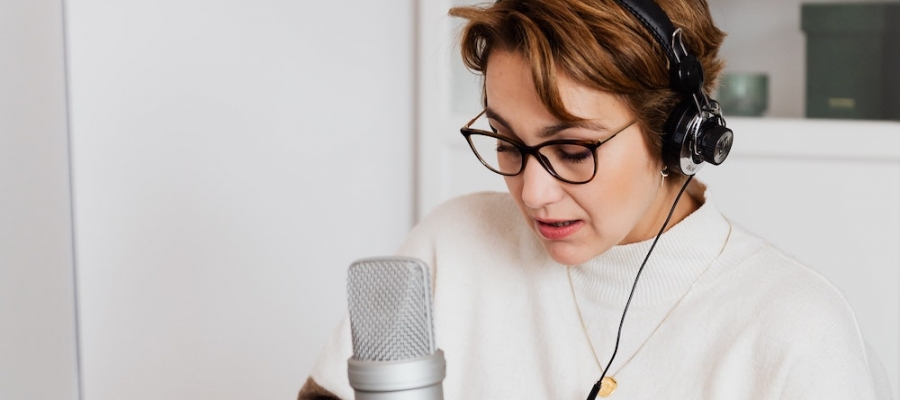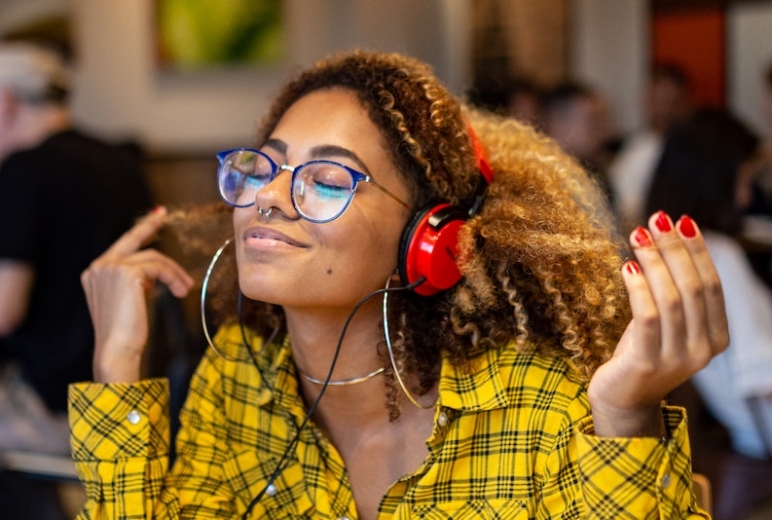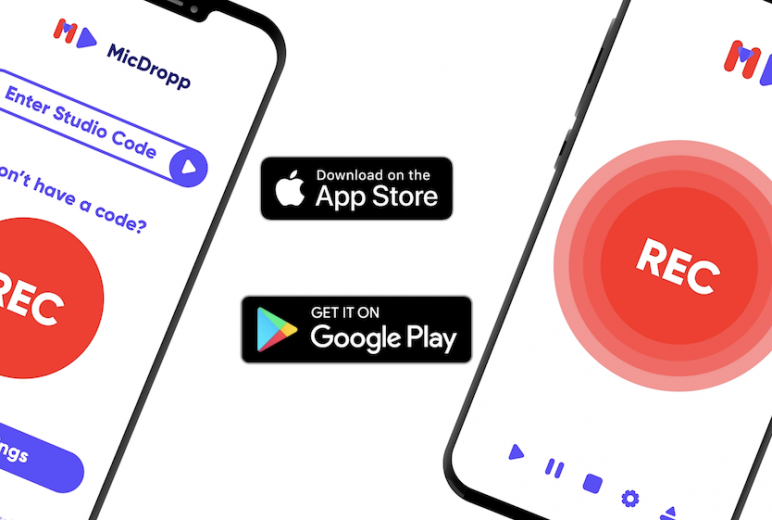Record better quality audio on your smartphone

MicDropp helps you connect with contributors and content makers, giving them the opportunity to record and send audio files straight back to your Dropbox. It has so many amazing uses: Podcasts, Feedback, Interviews, Surveys and so much more. It even has a script prompter for speeches and auditions.
While MicDropp is the easiest audio recording solution online, there are methods and tips you can follow to make sure the audio you record is best it can be. From hardware to technique and acoustics, this guide will showcase equipment and ideas which are tried and tested with MicDropp to help you get the best out of our app.
*Please note that recording just using your cell phone or tablet hardware will be perfectly fine in 99.9% of cases, it’s just your choice if you want to go that extra mile.
Enhancing your smart device's microphone
Let’s first start with the most important part of the chain, the actual recording element.
iPhone’s, iPads and Android devices are convenient portable devices with high specs, especially when it comes to their audio and video capture. Technology has made such leaps and bounds over the past 10 years that broadcast quality files are easily achieved from a sub $100 device.
The microphones embedded in the hardware are typically good quality, especially in high end iPhone and Android phones - but you can enhance them even further from as little as $30.
Before showcasing some of the equipment we recommend, here’s the different types available to you and what they are typically used for.
A dynamic Shotgun microphone captures where it’s pointing and rejects most of the sounds to the sides and rear. It is a directional microphone, great for recording a podcast host, interview subject or professional voiceover.
A Lavalier microphone is used for close recording of an interview subject, actor or presenter. These come in a wired or bluetooth version, the latter giving more flexibility. This type of microphone is great for documentary making and undercover recording, as the microphone can be taped to the chest under clothes.
A Stereo X/Y microphone is used to capture a room or more than one person. It’s most frequently used for interviews, meetings and concert recording and works great with MicDropp, as all recordings are captured in stereo.
A Condenser microphone is used to capture more dynamic range and a wider frequency response. It’s used for general purpose recording and because it’s powered typically has a lower signal to noise ratio.
MicDropp's recommended microphones
There are many reputable manufacturers that make professional studio microphones and many have now moved into the cell phone market. Rode, Shure and Saramonic are just a few of the most well known and our favourites. The following devices have been tested with MicDropp and offer an easy way to make your recordings sparkle.
Rode VideoMic Me-L/C ($80/£70)
iOS & Android
(click here to read more)
The Rode mic is a well made microphone that looks the part and delivers crisp sound quality. It’s a mono shotgun mic which is perfect for speeches, podcast and interview recording. It cuts out a high percentage of surrounding sounds and focusses in on where it’s pointed. It also has a headphone port allowing you to monitor what you are saying and the design is well thought through - gripping to the iPhone to provide unrivalled stability. It comes with a wind muff, which cuts down low end wind noise if recording outside.
Boya BY-DM100 ($50/£40)
USB C for Android
Zoom iQ7 ($100/£80)
iOS
(click here to read more)
This microphone is a fantastic choice for recording a band or a meeting. It’s multiple microphones swivel and even record on the side - capturing the whole room in a stereo field. What makes this great is the ability to change the gain (volume) of the recording from a rotating knob on the top of the device. It’s incredibly well made and looks cool too!
Saramonic Blink 500 Pro B2 ($299/£260)
iOS and Android
(click here to read more)
Saramonic are well known for their wireless microphone systems for iOS, Android and digital cameras. Their Blink 500 Pro B2 system allows you to create a professional recording set up for 2 persons. The package is built around lavalier microphones, great for a close up interview or investigative journalism. It captures incredible well and being 2.4g wireless, gives you incredible flexibility.
Other notable microphones/devices include:
Setting up your recording environment
So, whether you make a decision on using your internal microphone or buying an external solution - the environment you record your audio in, is an important factor too. Some of these tips will sound obvious, but it’s amazing the difference you will notice if you follow them.
*Remember, the recording environment should be in context of what you are recording for. If it’s contributors that are just providing feedback - then it can be anywhere, as long as there isn’t much noise in the background. But if it’s for an audition, voiceover or a podcast - then the environment should be adjusted to fit.
- If recording a voiceover or podcast, make sure you are within 10 inches of the recording source - to give that closer proximity feel - and don’t shout. If you feel like your voice is getting louder, move to a slightly further range.
- To cut down reflections make sure that you are recording in a room without many shiny surfaces, like windows. If there are windows, don’t record near them.
- You can soften the echoes by moving to a room with soft furnishings and many objects. This diffuses sound. You can even take it further with purchasing acoustic foam panels.
- When recording meetings, place the device in the centre of the table - equidistant of all the participants. This will give you a more balanced recording.
Happy Recording
At MicDropp we are driven by creating a platform/app ecosystem that aides your workflow for capturing audio recordings and sharing with the world.
We hope this selection of hardware and environmental tips help you produce better quality recordings.
If you have experienced some great hardware with our application or you're reading this from a manufacturer and would like us to trial your product, just get in touch here.
*MicDropp is available from free, so try us out today and become one of our community creating and sharing podcasts, meetings, interviews and more - with the world. Sign up from free here.



